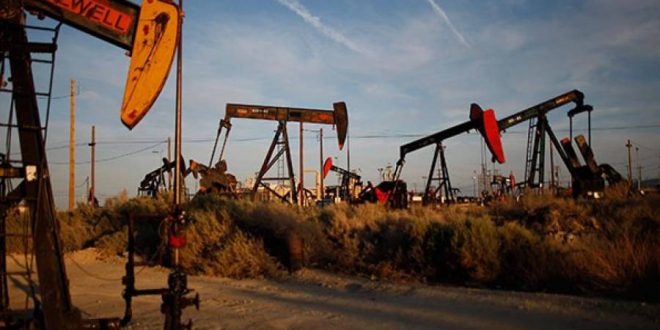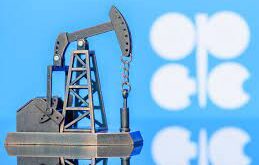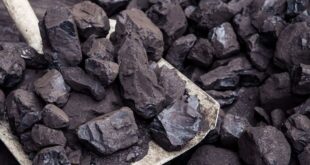For Mike Wirth. the future of Big Oil lies at home. under the dusty fields of West Texas.
As he celebrates his first year as chief executive of Chevron. Mr Wirth sees the Permian Basin as a plentiful source of high-quality crude for years to come. but that’s not all. according to Bloomberg. The low break-even costs to pump in the Permian are forcing Chevron to be more efficient everywhere. Mr Wirth said. from the deepwater platforms in the Gulf of Mexico to its liquefied natural gas plants.
In a time of transition. where everyone from politicians to shareholder activists is bashing Big Oil. shale’s success is forging a new reality. Mr Wirth said: lower your costs. or die.
Shale “has forced us to get smarter about how we do everything else“. he said in Houston. The cost of Gulf of Mexico projects is at `levels we would never have imagined a decade ago`. he added. Chevron isn’t becoming more efficient “because we were dumb then and we’re smart now. We’re doing it because we have to.`
If not. he said. the alternative is to put money into the Permian.
His comments come after The National this month reported the chief executive of the biggest player in the area as saying that surging production from the Permian – the largest shale basin in the US – requires an “optimal“ price band of $60 to $70 per barrel to maintain its momentum.
`WTI [West Texas Intermediate] to remain in the $60 to $70 range and Brent a bit higher than that depending on how that differential works out. I think for US shale that’s an optimal range even though development can continue at lower levels because of the lower breakevens.“ Occidental Petroleum’s Vicki Hollub told The National in an interview in Abu Dhabi.
WTI is the widely used benchmark for North American crude.
The US became the world’s largest crude producer last year with output hitting 11.9 million barrels per day in November. outpacing sovereign producer Saudi Arabia. and Russia. The US Energy Information Administration has forecast rising output with US production likely to surge past 12.1 million bpd in 2019.
The Permian. from where output averaged 3.831 million bpd in January. is likely to continue its production momentum this year. said Ms Hollub.
`The Permian Basin in the US could go up to that level. It really depends a little bit on how oil prices go but it certainly has the capacity to achieve that level.“ she said.
As Mr Wirth prepares to present his new strategy to investors in early March. his message is one of never-ending belt-tightening. always preparing for even lower energy prices and strong competition. It’s a lesson than came from his days rising through the oil refining ranks at Chevron: bad margins one year could turn even worse the next.
“Let’s not bet on high prices.“ Mr Wirth said. sitting in a conference room in the company’s Houston offices. with pictures of old Chevron retail logos on the wood-panelled wall behind him. “You make your own margin. Some of that comes through innovation and cost discipline. That’s a philosophy I bring to my current role and a belief that just because prices go back up. we shouldn’t accept the fact that costs have to go up.“
It’s a popular theme with shareholders in the energy industry who saw many companies spending billions in mega-projects that never deliver the expected returns. In Chevron’s case. investors endured half-a-decade of intense capital spending on developments in the Gulf of Mexico and enormous LNG projects in Australia. only for the oil price to crater in 2014.
Famously. at one Australian venture. Gorgon. costs swelled by almost half to $54 billion.
“Everybody was investing in these kinds of things.“ Mr Wirth said. But “it’s unlikely we’d see that confluence of events come together again. I certainly don’t see that in the foreseeable future.“
Chevron’s stock has outperformed US rival ExxonMobil over the past three years but lags European major Royal Dutch Shell. Oil executives have talked about keeping costs low since the 2016 crash but the last quarter was their first real test. Chevron. along with all five western supermajors. beat expectations on earnings. producing strong cash flows in the period despite Brent crude’s 38 percent decline.
Mr Wirth declined to specify capital expenditure plans after 2020. a concern for some analysts. but said investors should expect “continual disciplined capital allocation.“ Chevron will announced long-term capital plans at its investor day in New York on March 5. Mr Wirth delivered last year’s version barely a month into the job.
`We won’t fund everything.` he said bluntly. describing two deep-water projects Chevron abandoned last year that. a few years ago. it would have invested in. Instead. Chevron is now focusing on the Permian Basin of West Texas and New Mexico. the world’s biggest shale oil field where it inherited a region-leading 2.2 million-acre position as part of its merger with Texaco in 2001.
The area has been transformed from dusty cattle pasture to the supermajor’s biggest global growth project in just three years. Production has surged 84 percent in the 12 months and now accounts for more than one in every 10 barrels Chevron pumps worldwide. The Permian is on track to be cash flow positive by 2020. Mr Wirth said.
Big Oil initially ignored shale oil. not just in the Permian but in North Dakota. Colorado and Oklahoma. with executives instead touting the majors’ ability to build mega-projects in far distant countries. All that changed with the oil price collapse that started in 2014. Exxon paid $6.5bn to expand in the Permian in 2017 and BP Plc shelled out $10.5bn to buy acreage there.
The advantages of the Permian are manifold: a cheap source of production in an oil-friendly jurisdiction. high growth rates. low technical risk. and the ability to raise and lower output depending on crude prices.
Chevron is allocating the bulk of its upstream capital expenditure to the Permian this year. which means two-thirds of its annual spending will begin generating cash flow within two years. That’s almost unheard of. and an example of disruption in an industry that typically measures its capital spending and returns over decades.
It’s also a protection mechanism against an evolving energy future. Short-term projects are less likely to be stranded if demand or policy changes wipe out investments. It’s a risk that weighs on Mr Wirth. though he insists that oil and gas still have a strong future in scenarios laid out in the Paris Agreement on climate change.
“I’m not one who believes that even the world’s best strategic planners can tell the future.“ Mr Wirth said. “We can build a portfolio and an operating culture that’s resilient to change. that’s resilient to unforeseen developments. Let’s not bet on high prices. let’s not bet on a particular technology shift or a policy shift because we can’t control those things.“
As such. don’t expect Chevron to follow European rivals Shell and Total in diversifying into the power utility business as a hedge against declining crude demand.
“Some oil and gas companies may choose to reduce their share of oil and gas production and sales over time.“ Mr Wirth said.
“You’d like to believe those who are the most efficient. the most capable. the most environmentally responsible are the ones who will be the producers that increasingly the world relies on. That’s a core competency of ours.“
 Iran Energy News Oil, Gas, Petrochemical and Energy Field Specialized Channel
Iran Energy News Oil, Gas, Petrochemical and Energy Field Specialized Channel




